Our Rating
4.7
(out of 5)
Pros
- Models a wide range of classic vintage large-diaphragm mics very well
- Costs less than any of the mics it models
- Adds serious new tools to a mixer’s shed like switching mics post-recording
- Is a very capable standalone condenser mic
- Low self-noise
Cons
- Does not perform well modelling dynamic or ribbon mics
- Its ability to last the test of time is dependent on future updates for the plugin
Pads and Filters: Attenuation (-10dB, -20dB)
Weight: 770 g
Max SPL: 138 dB
Self-noise: 7 dB
Townsend Labs Sphere L22
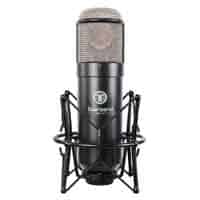
today’s best deals:
Bottom Line
Not as good as a vintage mic, but absolutely worth it. The ability to switch mics, polar patterns, and make off-axis adjustments post-recording makes it an impressively versatile machine.
Introducing the Sphere L22
There once was a time when digital modeling was lame. Advances in technology have taken away this lameness, however, making some of the old machines virtually indistinguishable from the mimicry of digital clones.
And now, microphone modeling has begun. The most ambitious of the lot is the Townsend Labs Sphere L22 mic system, claiming it can accurately mimic, even “correct” the response of large diaphragm condensers like the Neumann U47 or a Sony C800G as well as classic vintage ribbon mics and dynamic mics.
We got our hands on one and put it through a test drive to see if these claims were nonsense or surprisingly true.
See here for all of our gear reviews.
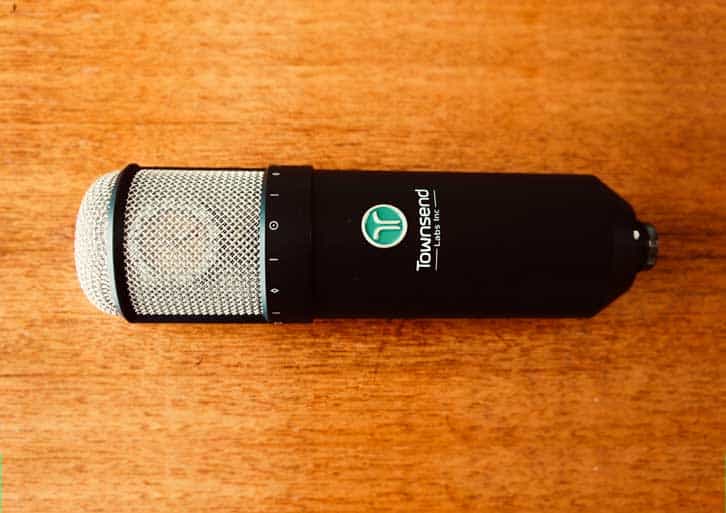
Who is this mic for?
The Sphere L22 is for serious recordists looking for a vintage mic sound or simply, someone looking for a really good large diaphragm condenser mic with loads of versatility.
Who is this mic NOT for?
This mic is not suited to beginner recordists or to those who don’t enjoy tinkering with plugins and options.
How it Works
The Sphere uses two matched capsules and compares the outputs of each to create a new mono track from the stereo signal. There’s more under the hood here than just manipulation of frequency response.
Properties that give vintage mics their unique sonic signature like on-axis response, off-axis coloration, proximity effect, and polar pattern are all parameters that can be swapped around ala carte with the Sphere L22.
This is new. By separating these parameters the Sphere L22 brings some extraordinary new tools to the recordist. With the Sphere L22, you are able to:
- Change microphones AFTER your recording session.
- Switch polar patterns (with remarkable control) during and after your session to bring out the ambiance of a room.
- Control off-axis response as a tool for bringing wanted details forward or moving unwanted sounds further away. This can work as a refined de-esser or as a general tool to flatter your singer.
Townsend Labs claim that the Sphere L22 can create new microphone models, or correct unwanted features of the vintage models digitally. While I think these claims go a bit too far, the new things you can do with this thing shouldn’t be downplayed.
But does it work? Can it model these classic mics?
This is the main question. And the answer is yes and no.
Townsend Labs claims:
“For vintage large diaphragm condenser microphones, in particular, our target is to meet or exceed the accuracy of currently available reissues, clones, or other modern versions of the corresponding mic. In most cases, we achieve or surpass that standard of accuracy…For other types of microphones, such as dynamics, ribbons, and small diaphragm condensers, the models are generally accurate when used on-axis.”
I had a Neumann U87(complete review of the Neumann U87) and a Shure SM57 in my studio to directly compare. For the other models, I had to rely on my memory of those mics or guess.
The Sphere L22 does, for the most part, accurately model the large diaphragm condenser models. It did sound like my Neumann U87 with small differences. The result is not as transparent or ready-to-go without adjustments as the U87, but it is similar.
For the other large diaphragm condensers, it always sounded good, even if I was skeptical of how accurate the mimicry was. (I was skeptical of the Sony C800G modeling)
For the dynamic and ribbon mic modeling, the results were not great. I’m not sure why Townsend Labs included these mics in the options at all.
For example, the 57 sounded nothing like an SM57. And the ribbon models were equally poor.
The models emulated include (36 in total) include:
Neumann U47, M49, U67 and U87; AKG C414, C12, and C4581; Telefunken ELAM 251; Sony C800G; Coles/STC 4038; Shure SM57
What’s in the box?
The Mic and Accessories
The Sphere L22 arrived in its black carry case with a shockmount, standard swivel mount, and a special Y-cable (five-pin XLR to two standard three-pin XLR).
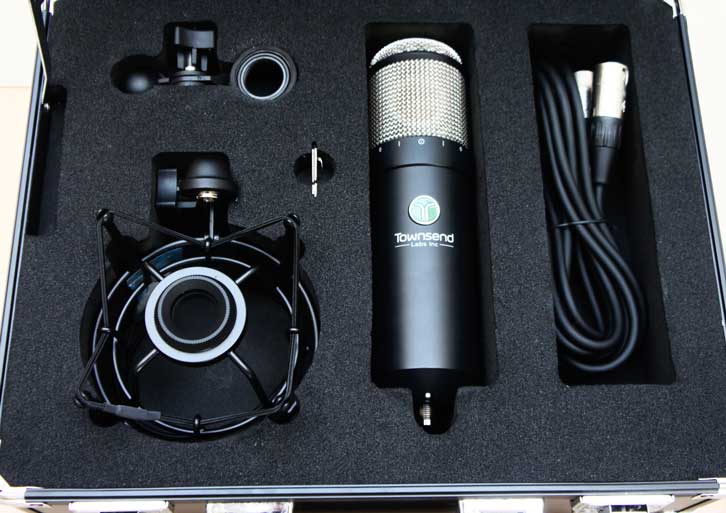
Plug-ins
The included plug-ins are what make the Townsend Labs Sphere L22 do its magic. It comes with the Sphere and Sphere 180 plug-ins in most standard formats (VST, AAX, Audio Units, UAD, and AAX-DSP) to assure compatibility with any DAW.
The Sphere 180 plug-in offers additional functionality to use the mic as a stereo mic. (which was pretty cool!)
If you have a UA Apollo interface, you can add these plug-ins in Console and record with near-zero latency. This will also save you DSP, allowing you to add more UA plugins during mixing and mastering.
Build/Design
The mic itself is big and a little less than sexy to look at, but seriously capable. It’s about the size of a Neumann U87 or a Rode NT1A if those references help you.
Contributing to its less than cool appearance, it has these strange LED lights under the grille, which bling it up in a sort of pimp-my-mic way.
After playing around with it for a while, however, I discovered the purpose of these is to light up the capsule so you can adjust the capsule direction precisely. To accurately model, the alignment of the capsule is essential.
Onboard switches include a reconcile switch (which equalizes the different gain levels from the two preamp inputs) and an attenuation pad (-10dB, or -20dB).
The mic requires two preamp inputs from your interface. All tracks from the Sphere need to be recorded in stereo to work properly.
Self Noise and Max SPL
The Sphere has very low self-noise (7dBA) in contrast with some of the old models it emulates. It also is more than capable in terms of handling loud sources, with a max SPL of 140dB.
The Best Bits
Switching Mics After Your Session
The obvious advantage of digital modeling is that it provides a wide array of sound options to choose from. You aren’t stuck with the sound of your particular machine.
As I said, the Sphere L22 does provide you with options. It models the on-axis response of famous vintage large diaphragm condenser mics very well.
But the ability to switch mics AFTER the session is so cool. You often hear things in mixing that you never heard in the recording session. With this mic, post-recording adjustments are all possible.
Switching Polar Patterns
Using the Polar Meter in the plugin, you are provided with a visual representation of each microphone’s specific polar pattern. A standard Cardioid shape varies quite a bit from mic to mic.
As well as being quite educational to look at, the ability to finely tune the polar pattern for any mic is a helpful tool for anyone mixing.
You can eliminate off-axis bounce altogether or bring more room into the sound.
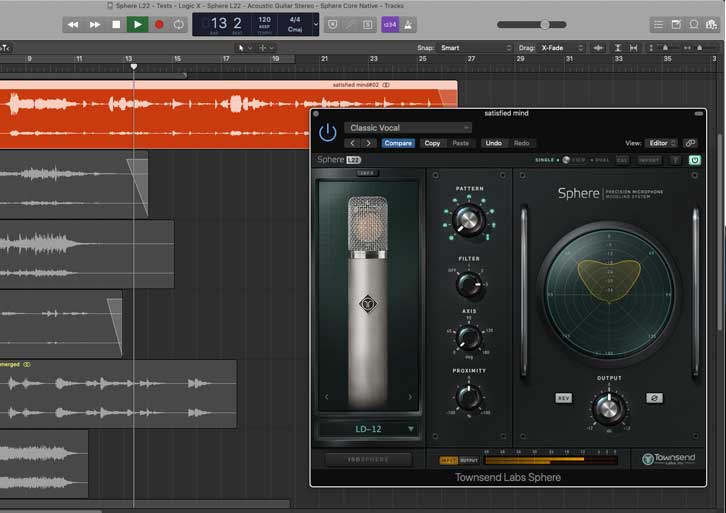
The Reverse Button
This ability to finely adjust polar patterns is illustrated most obviously with the reverse button in the plugin.
When you press the Reverse button in cardioid mode, you hear the bleed of the forward-facing diaphragm only. (the room)
But the magic is, that you can fine tune this parameter so that you’re only getting the room ambiance that you like. Increase the gain, and you’ve got a super cool room-only ambiance.
Using Off-axis Adjustments to Remove Unwanted Sounds
By adjusting the axis parameter, you are not changing the polar pattern. Only the off-axis coloration of the mic changes.
If you automate this parameter, it can be used as an elegant cleaning tool, subtly removing any unwanted clicks or bumps in the track. In my opinion, this is better than any de-esser out there.
Or the opposite applies, automating the off-axis dial you can bring out the most flattering versions of your tracks.
As you move the dial, you notice what off-axis coloration does to the sound. Then you simply dial up the nicest number.
Alternatives to the Townsend Labs Sphere L22
Antelope Audio Edge Quadro
THE competitor to the Sphere L22, offering a similar mic modelling system.
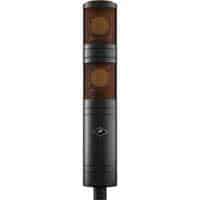
today’s best deals
Neumann U87
If you’re looking for a vintage large diaphragm condenser, this is the legend.
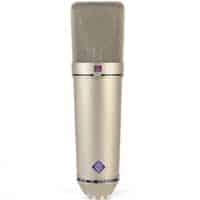
Neumann TLM 103
A transformerless, smaller, cheaper version of the U87.
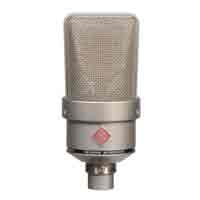
Is the Townsend Labs Sphere L22 worth it?
Okay, I’ll list the biggest downsides first. It doesn’t emulate ribbon or dynamic mics as promised.
And there are questions about how long this mic will be usable. Vintage mics would presumably last your lifetime or longer. The Sphere L22 is entirely dependent on future updates of the plugins being available.
That said, the sound of a vintage mic will change with time. And, vintage mics are delicate and expensive to repair.
But is it worth it? Yes.
The mic itself without the plugin delivers musically responsive results with ample headroom and honest frequency response. But with the plugin, the Sphere L22 brings tools to your studio that you cannot find in another mic or mic system.
It doesn’t beat vintage mics but considering it’s under $1500 – yes, worth it.
Questions or Comments?
Join the discussion here on Facebook.